Read by Matilda Longbottom
The first time I brewed tea from flowers I’d grown myself, I was transported back to my grandmother’s garden, where she would carefully collect chamomile blooms in her worn wicker basket each morning. That simple act of harvesting and brewing nature’s bounty creates a connection not just to our gardens, but to generations of tea makers before us. While store-bought teas certainly have their place, there’s an incomparable joy in sipping a beverage you’ve nurtured from seed to cup. Beyond the familiar chamomile and hibiscus, a whole world of floral teas awaits the adventurous gardener, each bringing its own story and healing properties to your teacup. Let me share with you the flowers that have transformed my garden into a living tea cabinet.
Traditional Tea Flowers
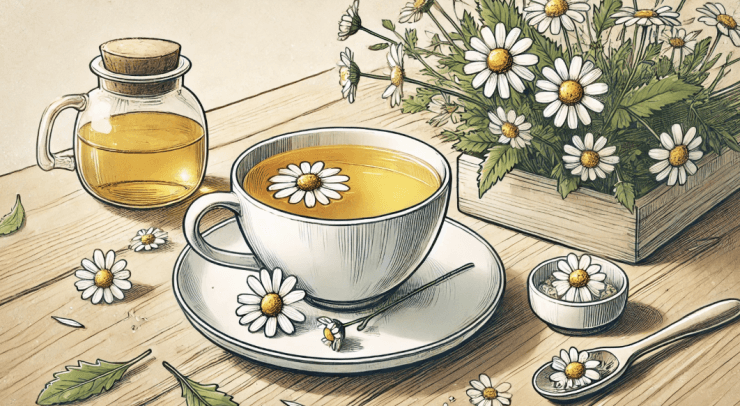
Chamomile (Matricaria chamomilla)
This classic tea herb produces delicate, daisy-like flowers with a sweet, apple-like fragrance. Growing just 12-18 inches tall, chamomile thrives in full sun to partial shade and well-draining soil. Harvest the flowers when they’re fully open, typically in early Summer. The resulting tea is known for its calming properties and gentle sweetness.
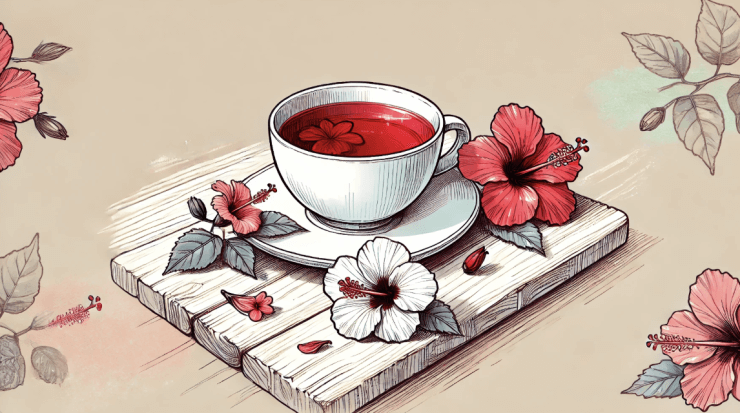
Hibiscus (Hibiscus sabdariffa)
While most gardeners know hibiscus for its stunning blooms, the variety used for tea (also known as roselle) produces calyces that create a tart, cranberry-like beverage rich in vitamin C. Plant in full sun and harvest the calyces when they become plump and red.
Asian Tea Traditions
Magnolia (Magnolia grandiflora)
The large, creamy-white buds of magnolia trees have been used in Chinese tea traditions for centuries. Before the flowers open, harvest the buds and dry them carefully. The resulting tea offers a delicate, sweet flavor with subtle notes of ginger and citrus. While magnolias take years to mature, they make stunning landscape specimens while providing tea material.
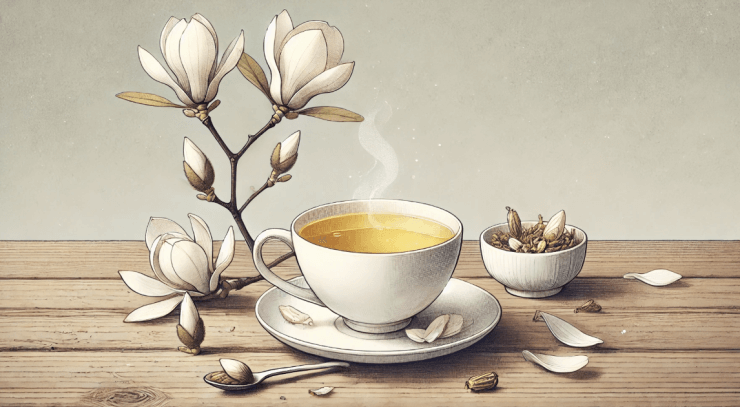
Chrysanthemum (Chrysanthemum morifolium)
A staple in Chinese tea culture, chrysanthemum flowers produce a sweet, honey-like tea with a light floral finish. Choose varieties specifically grown for tea, and harvest the flowers when they’re fully open but not past their prime. The plants prefer full sun and moderate moisture.
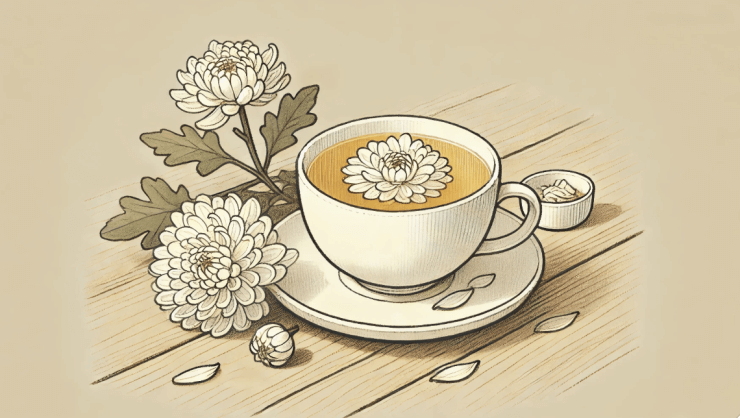
Flowering Garden Favorites
Rose (Rosa species)
Many rose varieties are suitable for tea, but the most fragrant varieties produce the best results. Look for David Austin roses or old garden varieties known for their strong perfume. Harvest petals in the morning when they’re fresh and dry them quickly to preserve their flavor. The resulting tea offers a romantic, delicate taste with varying notes depending on the variety.
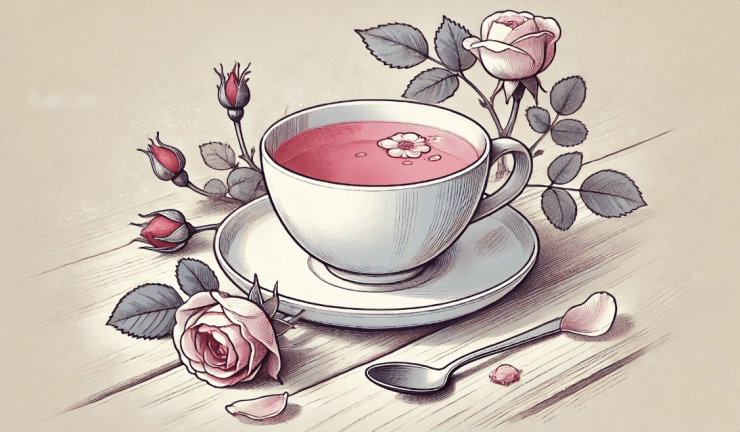
Lavender (Lavandula angustifolia)
English lavender produces the sweetest, most palatable blooms for tea. Growing in full sun and well-draining soil, these compact shrubs provide flowers throughout Summer. Harvest the buds just before they open for the strongest flavor, and use sparingly as the taste can be intense.
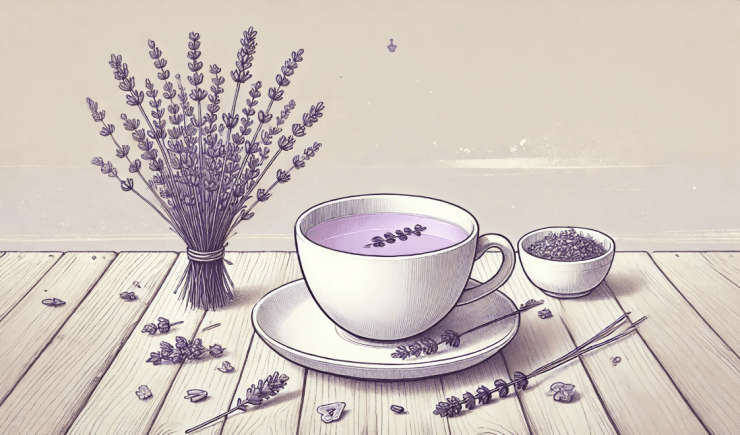
More Garden Treasures
Linden (Tilia species)
The sweet-smelling blossoms of linden trees, also known as basswood, create a delightfully honey-like tea that’s been cherished in European herbalism for centuries. Harvest the flowers while they’re attached to their distinctive wing-shaped bracts in early Summer. The resulting tea has a mild, floral sweetness with subtle woody notes.
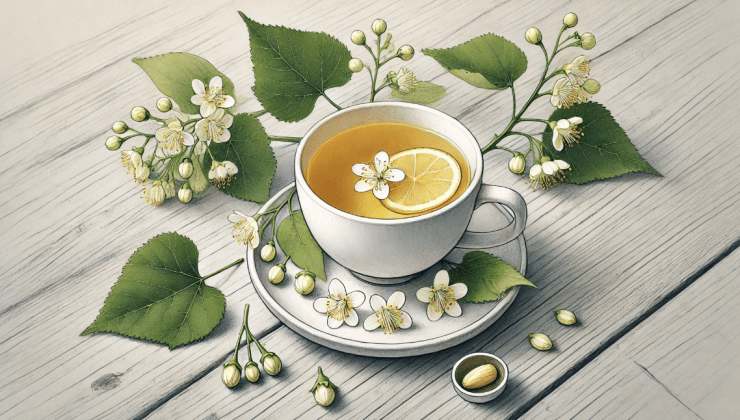
Borage (Borago officinalis)
With its striking blue star-shaped flowers, borage is not only a beautiful garden addition but also makes a refreshing tea. The flowers have a subtle cucumber-like flavor and can be used fresh or dried. This annual herb is easy to grow and self-seeds readily, providing a continuous supply of blooms throughout the Summer.
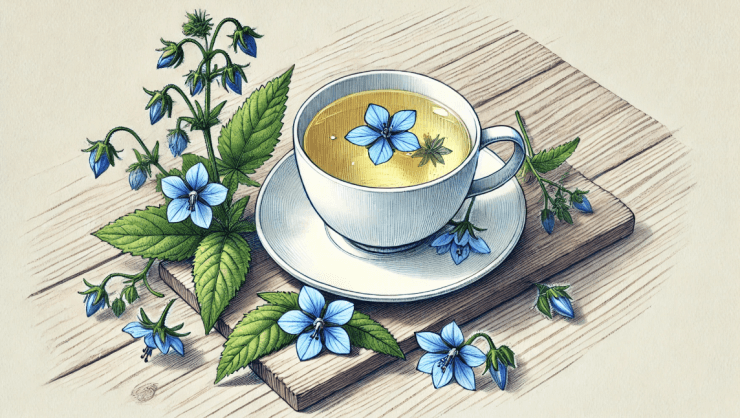
Calendula (Calendula officinalis)
Often called pot marigold, calendula produces bright orange and yellow flowers that create a mild, slightly spicy tea with a beautiful golden color. These flowers are incredibly easy to grow and bloom continuously when regularly harvested. Collect the whole flower heads on sunny mornings for the best flavor.
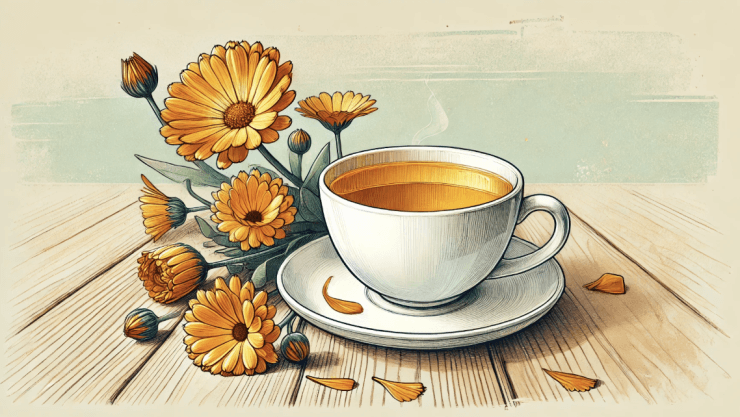
Growing Tips for Tea Gardens
- Choose a sunny location with well-draining soil for most tea flowers.
- Avoid using chemical pesticides or fertilizers on plants intended for consumption.
- Consider dedicating a separate area for tea plants to ensure they remain uncontaminated.
- Plant flowers in succession to ensure a continuous harvest throughout the season.
Harvesting and Processing
The key to excellent floral tea lies in proper harvesting and drying techniques. Harvest flowers in the morning after the dew has dried but before the heat of the day. Most flowers should be dried in a single layer in a warm, dark, well-ventilated space. A food dehydrator set to low temperature can also work well.
Storage and Use
Store dried flowers in airtight containers away from light and moisture. Most properly dried flowers will maintain their flavor for up to a year. When brewing, use about one tablespoon of dried flowers per cup of hot water, and steep for 3-5 minutes or to taste.
Creating your own floral tea garden offers both the pleasure of growing beautiful flowers and the reward of unique, homegrown beverages. Start with one or two varieties that appeal to you, and gradually expand your collection as you discover your favorites. Remember that some flowers can be combined to create custom blends, opening up endless possibilities for creative tea crafting.
Safety Note: Always verify that flower varieties are safe for consumption and grow them without chemical pesticides or fertilizers. Some ornamental varieties may not be suitable for tea-making.
What types of flowers do you grow for teas? I’d love to know which ones you love best!


 Previous
Previous


